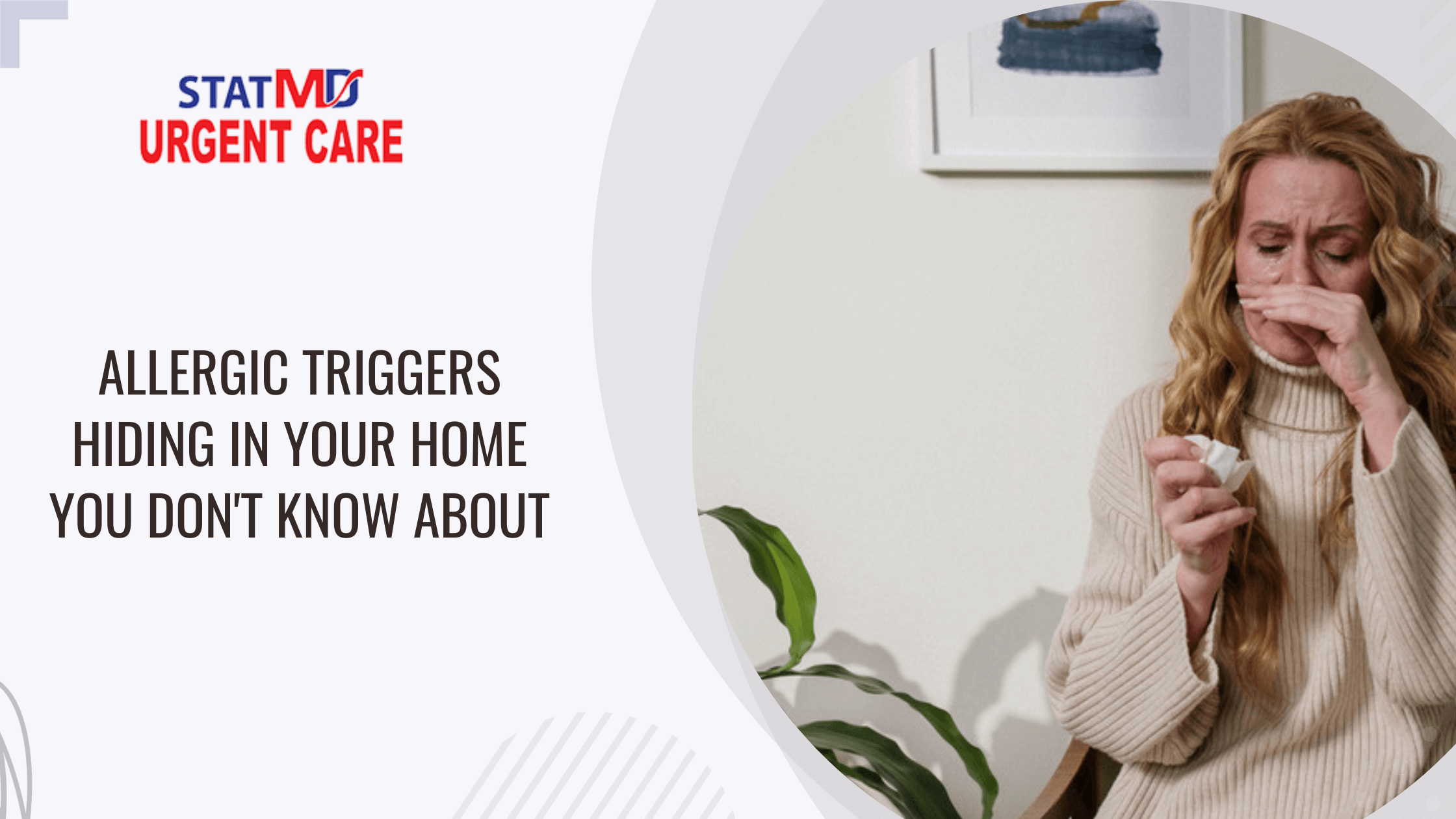
Flu Shots Now Available Don't Miss Out on Limited Supply!
For Young St: (661) 464-5000
For Panama Lane: (661) 464-5001

Many allergens are found in and around our home, making it a breeding ground for dust and allergies. You may wonder why your eyes are itching, your nose is congested, and your skin is irritated during allergy season.
When an allergen comes in contact with a sensitive person, the body reacts aggressively to it because it views it as a harmful invader to the body. The person will then experience an unpleasant allergic reaction, which is why urgent care allergy shots are recommended.
Allergic triggers at home can give you an unpleasant experience and leave you sneezing and itching. Every year, more than 50 million Americans deal with various allergies. Therefore, it is important to identify these allergens and remove them before they pose any serious health hazard.
Here are a few of the most unwelcomed allergy triggers in your house that can cause irritating reactions:
Tiny dust mites frequently cause allergy reactions. Your home is filled with hideouts for them. Concrete structures like tabletops, bookcases, and hardwood floors collect dust. Hot and moist environments are particularly appealing to dust mites. Soft surfaces are also perfect hiding places for mites, especially while sitting and sleeping.
They consist of soft furnishings, carpets, and mats. Vacuum your home frequently to combat dust mite allergies. To get a strip of moisture in the air, wash your rugs and curtains frequently and turn on a dehumidifier.
Carpets and rugs can hide harmful allergens like dust mites and pollen. Even if you often vacuum, mites can burrow in and produce allergic reactions. Since firm surface flooring is simpler to clean, it is better for your allergies than carpeting. Deep cleaning your carpet every month or two is highly recommended.
Mold spores are the most widespread indoor allergen. The most common places for molds to grow in the house are restrooms, houseplants, basements, and other wet spaces. Mold can thrive in any moist location, even with water or leaks. To stop mold from growing, try fixing any leaks or other water-related problems in your home or cleaning any mold with a peroxide and water solution. Avoid installing carpets in damp or humid areas. Seek urgent allergy care if you come across any reactions.
Pet allergens go beyond hair and fur. Pet allergies can also be caused by saliva and urine. If your sensitivities are extreme, you might have to give up your pets. To relieve some allergies you may experience, give your pet a weekly bath. Every week, wash the clothing and toys for your pet.
Pet urine or feces should also be cleaned up by someone else. After petting an animal, wash your hands. Do not allow the animal in your bedroom. 10%–20% of the global population suffers from dog and cat allergies, a significant public health problem as these rates rise.
Fish may appear like good pets for allergy sufferers, but they could begin to trigger symptoms without proper care. Fish bowls and their many components and wet surfaces outside the aquarium, such as the bottom of the lid, are all places molds can form.
Wipe off above-water tank components daily, and regularly give the tank and all of its interior decorations a good cleaning to prevent bacterial spread. As soon as you feed the fish, clean up any flakes that have fallen outside of the tank.
While soaps and laundry detergents can help keep your house clean, most have fragrances that can worsen allergy symptoms. For instance, in those prone to allergies, the perfumes in laundry detergent might result in atopic dermatitis, a condition marked by itching skin.
Additives and colorings in detergents and other soaps can cause reactions in certain persons. To alleviate the likelihood of causing your allergies, seek detergents and soaps devoid of colorings and scents. Walk-in urgent care to treat the severe effects of such allergies.
Outside allergens often make their way into our homes through wind, guests, or pets. Ragweed pollen is one of the most irritating outdoor allergens that can enter our house through wind or other mediums and cause allergic reactions. Then there’s grass, tree pollen, and animal dander that can easily enter our home and cause various allergic reactions. That’s why it's crucial to quarantine certain elements and sanitize your guests and pets, along with cleaning your home.
Generally, we assume that a highly reactive and acidic gas like Nitrogen Dioxide wouldn’t be found in our homes, but that’s not true. Although NO2 is mostly emitted from vehicles and other engine-operated machines, it can also be found in our homes through gas stoves or fireplaces. And research shows that repeated exposure to NO2 can cause asthma attacks and allergic sensations to inhaled antigens. Hence, it’s crucial to install a proper ventilation system or exhaust fan in your house to vent out the steam.
If you experience symptoms like sudden itching, sneezing, running nose, and red eyes, then you should consult a doctor or visit the nearest allergy urgent care center for a check-up. Immediate medical care can help prevent the symptoms from worsening.
If you have any allergic reaction or experience allergy-related symptoms, then you can seek urgent allergy care near you in Bakersfield at StatMD Urgent Care to discuss your treatment options. We provide immediate care and treatment for all allergy reactions. Our team strives to offer fast care while utilizing the best procedures in a relaxing, stress-free environment focused on the patient's needs. Contact us today, or walk into our clinic and experience world-class treatment in no time!